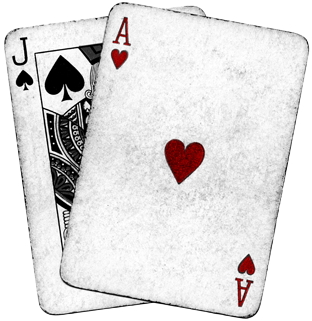Oxford was the first university to have a chess club, in 1845.
The first newspaper chess column appeared in the Liverpool Mercury in 1813.
George Koltanowski played 56 consecutive games blindfolded in 1960. He won 50 and drew the other 6.
The first chess game played by telephone was played by two gentlemen in Derbyshire, England in 1878.
In 1974, Stockholm hosted the first world computer chess championship, won by the Soviet program, Kaissa.
The first pocket chess set was created by the author of ROGET’S THESAURUS, Peter Mark Roget in 1845.
The first computer program to play proper chess was written at MIT by Alex Bernstein in 1958-59.
Dr. Emanuel Lasker of Germany held the world chess championship longer than anyone else – 26 years and 337 days.
The first chessboard to consist of alternating light and dark squares appeared in Europe at the end of the 11th century.
Can’t get enough! Vlastimil Hort of Czechoslovakia put on one of the most amazing exhibitions of simultaneous chess ever. He played 550 opponents, 201 simultaneously, and lost only 10 games, all in just over thirty hours in Iceland in April of 1977.
Can’t get enough! (part II) Hort then went on to set the record for the most consecutive games played in October of 1984. In Porz, Germany, he played 663 games in a 32.5 hour span, sometimes playing more than 100 opponents at a time. He won over 80% of the games and averaged 30 moves per game.
Garry Kasparov took part in the first satellite simultaneous exhibition in 1984, playing opponents in both London and New York. In 1988, Kasparov played 10 opponents in Australia, Belgium, Canada, England, Italy, Japan, Senegal, Switzerland, USA, and USSR, winning 8, drawing 1, and losing 1.
Janos Flesch played 52 strong players, winning 31 games, drawing 18 and losing 3 over 12 hours – blindfolded!
George Koltanowski played 56 consecutive games blindfolded in San Francisco in 1960. He won 50 and drew the other 6.
The first chess tournament on record was held at the Royal Court in Madrid in 1575. Giulio Polerio and Giovanni Leonardo defeated Ruy Lopez and Alfonso Ceron in a series of matches arranged by King Phillip II.
The first chess tournament held in the U.S. was the American Chess Congress, held in New York in 1857 and won by Paul Morphy.
The most players ever to compete in one tournament at the master level was 1251 at the appropriately-named World Open in 1985.
The longest game on record took place in Belgrade, Yugoslavia, on February 17, 1989 between Ivan Nikolic and Goran Arsovic. The game took more than 20 hours, with 269 moves made between the two, and it ended in a draw.
Francisco R. Torres Trois took 2 hours and 20 minutes to make one move in a game against Luis M.C.P. Santos, in Vigo, Spain in 1980. That’s the slowest single move on record. Ironically, he had only two possible moves to consider!
Wilhelm Steinitz defeated Johann Hermann Zuckertort in the first world championship of chess, in 1886. Chess was the second sport to have a world championship, after billiards (1873).
Wilhelm Steinitz of Austria, and later the U.S., was the oldest world champion of chess – he was 58 years and 10 days old when he lost the title to Dr. Emanuel Lasker in 1894.
Garry Kasparov of the former USSR was 22 years and 210 days old when he beat Anatoly Karpov for the world championship of chess on November 9th, 1985, making him the youngest men’s champion in history. However, the youngest world champion of all was Maya Chiburdanidze of the former USSR, who was 17 years old when she won the women’s title in 1978.
Anatoly Karpov was awarded the world championship in 1975 when Bobby Fischer refused to appear to defend his title, thereby becoming the first world champion to win the title without playing an actual match.
Nona Gaprindashvili of the former USSR was the first woman to achieve men’s international grandmaster status in 1978. She also became the first woman to win a “men’s” chess tournament when she tied for first place at Lone Pine in 1977, and has since had a perfume named after her in Russia.
Judit Polgar of Hungary was the youngest female to attain international grandmaster status, at 15 years and 150 days old, on December 20, 1991. Bobby Fischer of the US was 15 years, 6 months, and 1 day old when he became the youngest man to become an international grandmaster. This record was broken by Peter Leko, a Hungarian who became grandmaster in 1994. And in March 1997 Etienne Bacrot, aged 14 and two months, earned his title with a last-round victory at a tournament near Paris.
Niaz Murshed of Bangladesh is the youngest person to ever win a national championship, winning the Bangladesh championship at age 12, and later becoming the first (and only) grandmaster from Bangladesh, at the age of 20.
LUKE McShane, in March 1997, became the youngest Briton to achieve the rank of International Master at the age of 13 years and two months. Luke, from Clapham, London, gained the accolade with wins and draws against Grandmasters at a German tournament. Luke beat the record of Matthew Sadler, the British champion in 1995/6, who was 14 when he reached the grade.
The youngest player to win International Master status was Judit Polger, of Hungary, who achieved the mark in 1989 when she was 12 years and one month old.
The first chess magazine Le Palamede, founded in 1836 by La Bourdonnais. The periodical was named after Palamades, an ancient Greek inventor, who is one of the many fabled creators of chess.
The oldest newspaper chess column still in existence runs in the Illustrated London News, and first appeared in 1842.
The first match played by telegraph occurred in 1844 between Washington, D.C. and Baltimore, using the first American telegraph.
The Anderssen-Kolisch match of 1861 was the first match played with a time limit. An hour-glass gave each player 2 hours to make 24 moves.
In 1902, passengers on the American liner Philadelphia and the Cunard liner Campania 70 miles away in the Atlantic played the first match by radio, transmitting their moves by wireless operators aboard the ships. The match was not concluded since the radios were needed for navigational use.
The USA and USSR played the first international radio chess match on record in 1945, which was also the first international sporting event since the outbreak of World War II. It marked the debut of the USSR in international sport. Never before had a team representing the USSR played another country in any form of sport. Mayor LaGuardia of New York City made the opening move for the U.S., while Ambassador Averill Harriman officiated the match in Moscow.
The first chess game played between space and earth occurred on June 9, 1970 by the Soyez-9 crew. The cosmonauts played their ground crew on a chess set designed specifically for the weightless environment. The game ended in a draw.
THE CHESS PLAYERS, painted in 1490, was the first known painting with chess theme.
The first appearance of chess in a film was in THE WISHING RING, in 1914.
The first movie about chess was CHESS FEVER, made in Moscow in 1925, starring Jos Capablanca.
BALLET DES ECHECS was the first known ballet with chess theme performed for Louis XIV of France.
GAME AT CHESS, written by Thomas Middleton in 1624, was the first play which featured chess, performed in England at the Globe theater. The play was a biting political satire, presenting important statesmen of the day as chess pieces, and it played to packed houses before being shut down due to political pressure. Middleton was arrested and jailed, and the actors were all fined for their participation!
CHESS is a 1986 musical written by Tim Rice, the former playwriting partner of Andrew Lloyd Webber, and Benny Andersson and Bjorn Ulvaeus of ABBA fame. CHESS is based on the Fischer – Spassky World Championship match of 1972 and, at the time, was the most expensive play ever put on stage, with a budget of more than $4 million.
AUTO DA FE is a 1935 novel written by Elias Canetti, a Nobel Prize winner for Literature, in which the main character is a man named Fischer who wants to be the chess champion of the world.
The first time a chess computer and a person played a game under tournament conditions was at the Massachusetts Amateur Championship in 1967. MacHack VI, created at MIT, didn’t win, but still ended up with a 1239 provisional rating.
In 1974, Stockholm hosted the first world computer chess championship, won by the Soviet program, Kaissa.
BELLE, a chess program created by Ken Thompson and Joe Condon, has the distinction of becoming the first computer to be awarded title of U.S. chess master, in 1983. BELLE had previously won the 1980 World Computer Chess Championship.
David Strauss holds the dubious distinction of being the first international master to lose to a computer, losing to an experimental Fidelity machine at the 1986 U.S. Open.











